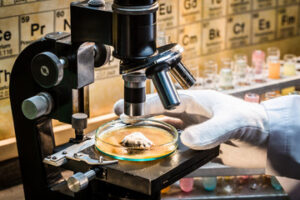If you’re thinking of buying a home that has a septic tank, you should consider having it inspected. This will show the seller you’re a serious buyer and you’ll be ready to close if the system is in good condition.
Bacteria in a septic tank produce gases that must be released to prevent a build-up of pressure. A baffle wall in the tank keeps surface scum from clogging the inlet pipe and reduces wastewater agitation, which makes it easier for solid waste to settle. Contact Septic Tank Armadale now!

In most cases, a septic tank costs $3,000 to $7,000. The price increases depending on how many bedrooms and bathrooms your home has. It also depends on the size of your septic tank. On average, a three-bedroom house needs a 1,000-gallon septic tank. Some local or state governments require a larger tank for new homes.
All the plumbing in your home connects to a sewer line that slopes toward your septic tank. Each time you flush a toilet, take a shower, wash clothes or dishes, wastewater enters your septic system through this line. This wastewater flows to the septic tank, where it separates into layers. The heavy waste sinks to the bottom of the tank, while lighter debris floats on top. The bacteria in the septic tank break down this sewage into sludge and liquid waste.
The septic tank’s inlet and outlet tees are situated below the scum layer, so hydraulic pressure forces sewage up these tees and out into the absorption field. The tees keep the scum layer from traveling to your leach field where it can clog and reduce your system’s efficiency.
A septic tank’s risers allow ground-level access to the tank, and they can be made of concrete, fiberglass or plastic. They are typically installed along the inlet and outlet tees, but they can also be placed where other components connect to your septic tank. They are essential for maintenance and inspections, and they prevent mud from entering the septic tank.
Most septic tank systems include a tank pump and baffles, which draw wastewater from the mid-level of the tank to the outlet pipe. This keeps sludge and scum from flowing to the absorption field, where they can clog and block water flow. Some systems also feature an effluent filter that captures and retains fine particles that could clog downstream components.
A septic tank can be expensive to install, especially if you have to hire a company to clear your property of trees and shrubs before digging. But septic tanks are a long-term investment that can save you money in the long run compared to a traditional municipal sewer system.
Maintenance
If your septic tank becomes overloaded with too much water, it can back up into your home and contaminate surface and groundwater. This is a big reason why it’s important to have regular maintenance done. Frequent cleanings also help prevent septic system emergencies, like severe clogs that can cause sewage to backup into your home.
Besides having routine maintenance done, it’s also important to keep detailed and clear septic tank records. If you ever decide to sell your home, having a complete set of maintenance records can make the sale process go more smoothly. A septic system with a well-functioning record is more appealing to potential buyers than one with unknown history.
The septic system works by transporting wastewater into the septic tank and then keeping it there long enough for solid and liquid wastes to separate. When the wastewater leaves the septic tank, it enters the absorption field or drainfield. This is a series of pipes with holes in them that are laid in gravel trenches underneath the soil. Here the wastewater is further treated by absorbing into the ground and the grass above.
While it’s important to have a septic tank that has a large capacity, you should not flush anything that isn’t supposed to be in your septic system. Putting in items that are marked “flushable” but actually aren’t can cause serious problems that will cost you money. These items include wipes, diapers, tampons, feminine hygiene products, and other non-flushable materials.
Over time, septic tanks can become full of solids that clog up the inlet and outlet pipes. A clogged outlet pipe can lead to sewer backups inside your home, which can damage your toilets, sinks, and bathtubs.
It’s also important to inspect the baffles in your septic tank regularly. These restrain and redirect the flow of incoming and outgoing wastewater in the tank to prevent scum from building up in the tank inlet and outlet. A septic tank with missing or damaged baffles is more likely to have clogs and other issues.
Another thing to consider is keeping plants, shrubs, and trees away from your septic tank and drainfield area. They can grow roots into the lines and cause the septic system to fail. You should also not drive or park vehicles over the septic system.
Environment
In addition to the expense of a septic tank, homeowners must also consider how the system will affect their local environment. Wastewater contains pathogenic bacteria and other contaminants that could contaminate nearby drinking water wells or surface waters. Failing septic systems can also leach excess nutrients such as nitrogen and phosphorus into the soil. These nutrients can cause toxic algal blooms that deprive fish and other aquatic organisms of oxygen, causing them to die.
A septic tank consists of two chambers with one end connected to an inlet wastewater pipe and the other connected to a septic drain field. The tank has a baffle at both the inlet and outlet that helps prevent solids from skimming across the liquid surface of the tank and exiting untreated through the outlet.
When wastewater enters the septic tank, it goes into the first chamber where it begins the treatment process. Heavy solids settle to the bottom of the tank and form a layer of sludge, while oils and greases float to the top and become a layer of scum. The clarified wastewater in the middle, called effluent, flows out of the tank through the outlet.
Once the septic tank’s wastewater is discharged, it flows through a distribution box and perforated pipes into the soil absorption system. The soil absorption system, commonly referred to as a drainfield, is designed to purify the wastewater by discharging it below ground into natural soil for final treatment and disposal. Other names for the absorption field include leach fields, seepage beds, cesspools and sand or gravel mounds.
A septic tank system must be properly maintained to ensure it operates properly. A septic tank that overflows can create foul odors, and untreated sewage can flow into the home and clog toilets. Homeowners can prevent this by avoiding flushing non-biodegradable materials down the toilet, such as cigarette butts, cotton swabs and menstrual hygiene products.
It is also important to map out septic tank and system components and mark them with stakes or signs to avoid damaging the system when doing yard work, landscaping or construction projects. It is also a good idea to keep vehicles, children and pets away from the septic tank and drainfield.
Safety
If you’re considering working on your own septic system or hiring a professional to pump it, you should know about the safety risks involved. These hazards can range from harmful gases to infectious diseases and other health problems. Septic tank pumps require special equipment that only professional plumbers have access to, so it’s best to leave the job to them. However, there are still several things you can do to ensure your own and your family’s safety while dealing with the septic tank.
First, you should make sure the septic tank’s lid is secure. Each year, a number of children and adults fall into septic tanks, often because the lid is not properly secured. It’s also important to keep trees and shrubs away from the septic tank and leach field, as their roots can damage the structure and create leaks.
You should also make sure you’re wearing proper safety gear when working around a septic tank, including gloves and a dust mask. You should also avoid using any tools that may come into contact with sewage, which can contain dangerous bacteria and viruses. It’s also a good idea to wear rubber boots and wash any cuts or abrasions before leaving the work area.
While cleaning or pumping a septic tank, it’s important to keep kids and pets away from the area. This will prevent them from getting injured by moving hoses or other machinery. You should also keep the septic tank itself away from any bodies of water on your property, as the waste that enters the tank can be harmful to fish and other animals.
The decomposition of waste in a septic tank can also release methane, which is an explosive gas. You should never use open flames near a septic tank, even if it’s closed. It’s also a good idea not to smoke near the tank, as a single spark can ignite the fumes and cause an explosion.
You should also consider using a gas monitor during the pumping process. This will help you detect dangerous gases that can be odourless or have very weak smells. You should also wear a breathing apparatus if you need to enter the tank.



